2013 年专业英语八级考试真题及答案
this section you willhear a mini-lecture .You willhear the lecture ONCE
PART ILISTENING COMPREHENSION (35 MIN)
SECTIONAMINI-LECTURE
In
Y. While
listening, take notes on the important points .Your notes will not be marked, but
you will need them to complete a gap-filling task after the mini-lecture .When the
lecture is over, you will be given two minutes to check your notes, and another ten
minutes to complete the gap-filling task on ANSWER SHEET ONE, using no more than
three words in each gap .Make sure the word(s) you fill in is (are)both grammatically
and semantically acceptable . You may refer to your notes while completing the
task . Use the blank sheet for note-taking .Now, listen to the mini-lecture .
There are difference between active learning and passive learning.
ONL
Characteristics of active learners:
I. reading with purposes
A. before reading: setting goals
B. while reading: (1) ________
AI.(2) ______ and critical in thinking i.e. information processing, e.g.
-- connections between the known and the new information -- identification of (3)
______ concepts
-- judgment on the value of (4) _____.
III. active in listening
A.ways of note-taking: (5) _______.
B.before note-taking: listening and thinking IV. being able to get assistance
A.reason 1: knowing comprehension problems because of (6) ______.
B.Reason 2: being able to predict study difficulties
--active learners: accept
--passive learners: (8) _______
�
B. attitude toward (9) ______
--active learners: evaluate and change behaviour
--passive learners: no change in approach
Relationship between skill and will: will is more important in (10) ______.
NTERVIEW
this section
Lack of will leads to difficulty in college learning.
SECTION B
In
you willhear everything
ONCE
ONLY . Listen
carefully
and then answer the
questions that follow .Mark the best answer to each question on ANSWER SHEET
TWO . Questions 1 to 5 are based on an interview . At the end of the interview
you will be given 10 seconds to answer each of the following five questions . Now
listen to the interview .
1. According to the interviewer, which of the following best indicates the
relationship between choice and mobility?
A . Better education→ greater mobility → more choices.
B . Better education→ more choices → greater mobility .
C. Greater mobility→ better education → more choices.
D .Greater mobility→ more choices → better education.
2.According to the interview ,which of the following details about the first poll
is INCORRECT?
A . Shorter work hours was least chosen for being most important .
B . Chances for advancement might have been favoured by young people .
C. High income failed to come on top for being most important.
D .Job security came second according to the poll results .
3. According to the interviewee , which is the main difference between the first
and the second poll?
A . The type of respondents who were invited .
�
B . The way in which the questions were designed .
C. The content area of the questions.
D . The number of poll questions .
4. What can we learn from the respondents ’ answers to items 2, 4 and 7 in the
second poll?
A . Recognition from colleagues should be given less importance .
B . Workers are always willing and ready to learn more new skills.
C.Psychological reward is more important than material one .
D . Work will have to be made interesting to raise efficiency.
5. Accordingto
psychologicaland
the interviewee , which
of
the followingcan offer
both
monetary benefits?
A . Contact with many people .B . Chances for advancement.
C. Appreciation from coworkers .D . Chances to learn new skills
SECTION CNEWS BROADCAST
In this section you willhear everything
answer the
ONCE
ONLY . Listen carefullyand then
questions that follow .Mark the best answer to each question on ANSWER SHEET
TWO . Questions 6 and 7 are based on the following news, At the end of the news
item, you will be given 20 seconds to answer the questions. Now listen to the news .
6. According to the news item ,“ sleep boxes” are designed to solve the problems
of
A . airports .B. passengers.C. architects.D .companies.
7. Which of the following is NOT true with reference to the news?
A . Sleep boxes can be rented for different lengths of time .
�
B . Renters of normal height can stand up inside .
C. Bedding can be automatically changed .
D . Renters can take a shower inside the box.
Question 8 is based on the following news. At the end of the news item, you will
be given 10
seconds to answer the question.Now listen to the news .
8. What is the news item mainly about?
A . London ’S preparations for the Notting Hill Carnival.
B . Main features of the Notting Hill Carnival.
C.Police's preventive measures for the carnival .
D .Police participation in the carnival .
Questions 9 and 10 are based on the following news . At the end of the news item,
you will be given 20 seconds to answer the questions.Now listen to the news .
9. The news item reports on a research finding about
A . the Dutch famine and the Dutch women .
B . early malnutrition and heart health .
C. the causes of death during the famine.
D . nutrition in childhood and adolescence .
10. When did the research team carry out the study?
A .At the end of World War II .
B . Between 1944 and 1945.
C. In the 1950s.
D . In 2007 .
�
PART II READING COMPREHENSION (30 MIN)
In this section there are four reading passages followed by a total of 20
multiple-choice questions. Read the passages and then mark the best answer to each
question on ANSWER SHEET TWO . TEXT A
Three hundred years ago news travelled by word of mouth or 1etter, and circulated
in taverns and coffee houses in the form of pamphlets and newsletters.“ The coffee
houses particularly are. very roomy for a free conversation , and for reading at
an easier rate all manner of printed news,”noted one observer.Everything changed
in 1833 when the first mass-audience newspaper,
The New York Sun,pioneered the use of advertising to reduce the cost of news, thus
giving
advertisers access to a wider audience.The penny press,followed by radio and
television ,turned news from a two-way conversation into a one — way broadcast,
with a relatively small number of
firms controlling the media .
Now, the news industry is returning to something closer to the coffee house.The
internet is
making news more participatory ,social and diverse,reviving the discursive
characteristics of" the
era before the mass media.That will have profound effects on society and politics.In
much of the
world .the mass media are flourishing .Newspaper circulation rose globally by 6%
between 2005and 2009. But those global figures mask a sharp decline in readership
in rich countries.
Over the past decade,throughout the Western world ,people have been giving up
newspapers and TV news and keeping up with events in profoundly different ways .Most
strikingly, ordinary people are increasingly involved in compiling , sharing,
filtering , discussing and distributing news. Twitterlets people anywhere report
whatthey are seeing. Classifieddocuments are
published intheir thousands online .Mobile · phone footage of Arab uprisings
andAmerican tornadoesisposted
social-networkingsitesandshownontelevision
newscasts.Social-networking sites help people find, discuss and share news with
their friends .
And it is not just readers who are challenging the media elite. Technology firms
on
�
including Google , Facebook and Twitter have become important conduits of
news. Celebrities and world leaders publish updates directly via social networks ;
many countries now make raw data available through “ open government”
initiatives . The internet lets people read newspapers or watch television channels
from around the world. The web has allowed new providers of news , from individual
bloggers to sites , to rise to prominence in a very short space of time. And it
has made possible entirely new approaches to journalism , such as that practiced
by WikiLeaks ,which
provides an anonymous way forwhistleblowers
is no longer controlled by a few press barons and state outlets .
In
social news environment ,with
is a good thing .The transformation of the news business is unstoppable, and
attempts to reverse it are doomed to failure .As producers of new journalism ,
individuals can be scrupulous with facts and transparent with their sources. As
consumers, they can be general in their tastes and demanding in their standards.And
although this transformation does raise concerns ,there is much to celebrate in
the noisy, diverse, vociferous , argumentative and stridently alive environment
of the news business in the ages of the internet . The coffee house is back. Enjoy
it .
principle , every liberalshouldcelebrate this. Amore participatory
to publishdocuments. The news agenda
and
a remarkablediversity
and range of
news sources,
the passage, what initiatedthe
transformationofcoffee-house
11. Accordingto
news to
mass-media news?
A . The emergence of big mass media firms .
B . The popularity of radio and television .
C. The appearance of advertising in newspapers .
D . The increasing number of newspaper readers.
12. Which of
returning
to
the followingstatements best supports“ Now, the Hews industry is
something closer to the coffee house”?
ANewspaper circulation rose globally by 6 % between 2005 and 2009.
B .People in the Western world are giving up newspapers and TV news .
C. Classified documents are published in their thousands online .
�
D . More people are involved in finding, discussing and distributing news .
13. According to the passage, which is NOT a role played by information technology?
A . Challenging the traditional media .
B .Planning the return to coffee-house news .
C.Providing people with access to classified files .
D .Giving ordinary people the chance to provide news .
14. The author’ S tone in the last paragraph towards new journalism is
A . optimistic and cautious .B. supportive and skeptical .
C. doubtful and reserved .D. ambiguous and cautious.
15. In“ The coffee house is back”, coffee house best symbolizes A . the changing
characteristics of news audience .
B . the more diversified means of news distribution .
C. the participatory nature of news .
D. the more varied sources of news .
TEXT B
Paris is like pornography .You respond even if you don ’t want to .You turn a
corner and see a vista,and your imagination bolts away 。Suddenly you are thinking
about what it would be like to live in Paris ,and then you think about all the lives
you have not lived .Sometimes,though, when you are lucky, you only think about
how many pleasures the day ahead holds. Then, you feel privileged .
The lobby of the hotel is decorated in red and gold. It gives off a whiff of 1
9m.century
decadence. Probably as much as any hotel in Paris , this hotel is sexy . 1 was
standing facing the
revolving doors and the driveway beyond. A car with a woman in the back seat— a
woman in a
�
short skirt and black — leather jacket— pulled up before the hotel door .She swung
off and she was
wearinghigh
for
this
heels. Normally,my mind
wouldhave leaped and imagined
a story
woman . Now it didn't I stood there and told myself.Cheer up. You’ re in Paris.
In many ways ,Paris is best visited in winter .The tourist crowds are at a minimum ,
and one
is not being jammed off the narrow sidewalks along the Rue Dauphine. More than
this . Paris is
like many other European cities in that the season of blockbuster cultural events
tends to begin in mid-to late fall and so ,by the time of winter, most of the cultural
treasures of the city are laid out to be admired.
The other great reason why Paris in winter is so much better than Paris in spring
and fall is that after the end of the August holidays and the return of chic Parisian
women to their city, the restaurant-opening season truly begins hopping .By winter ,
many of the new restaurants have worked out their kinks( 不足;困难 )and,once the
hype has died down,it is possible to see which restaurants are actually good and
which are merely noisy and crowded .
Most people are about as happy as they set their mind to being, Lincoln said .In
Paris it
doesn’t take much to be happy .Outside the hotel ,the sky was pale and felt very
high up .I walked
the few
toward
blocks
to
the Seine and began running along the blue-green river
the Eiffel
Tower.The tower in the distance was black ,and felt strange and beautiful the way
that many things built for the joy of building do .As I ran toward it ,because
of its lattice structure, the tower seemed obviously delicate . Seeing it, I felt
a sense of protectiveness.
I think it was this moment of protectiveness that marked the change in my mood and
my slowly becoming thrilled with being in Paris .
During winter evenings ,Paris’s streetlamps have a halo and resemble dandelions.In
�
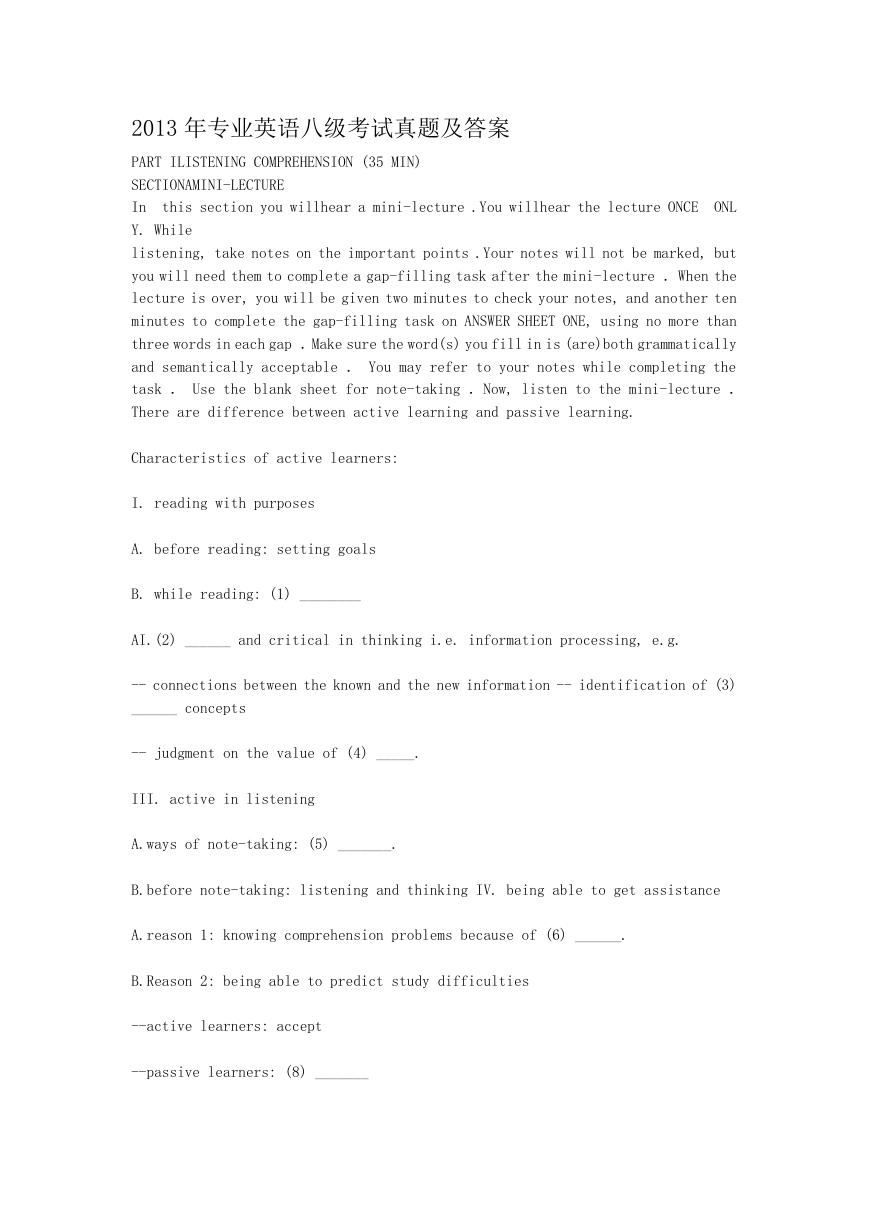
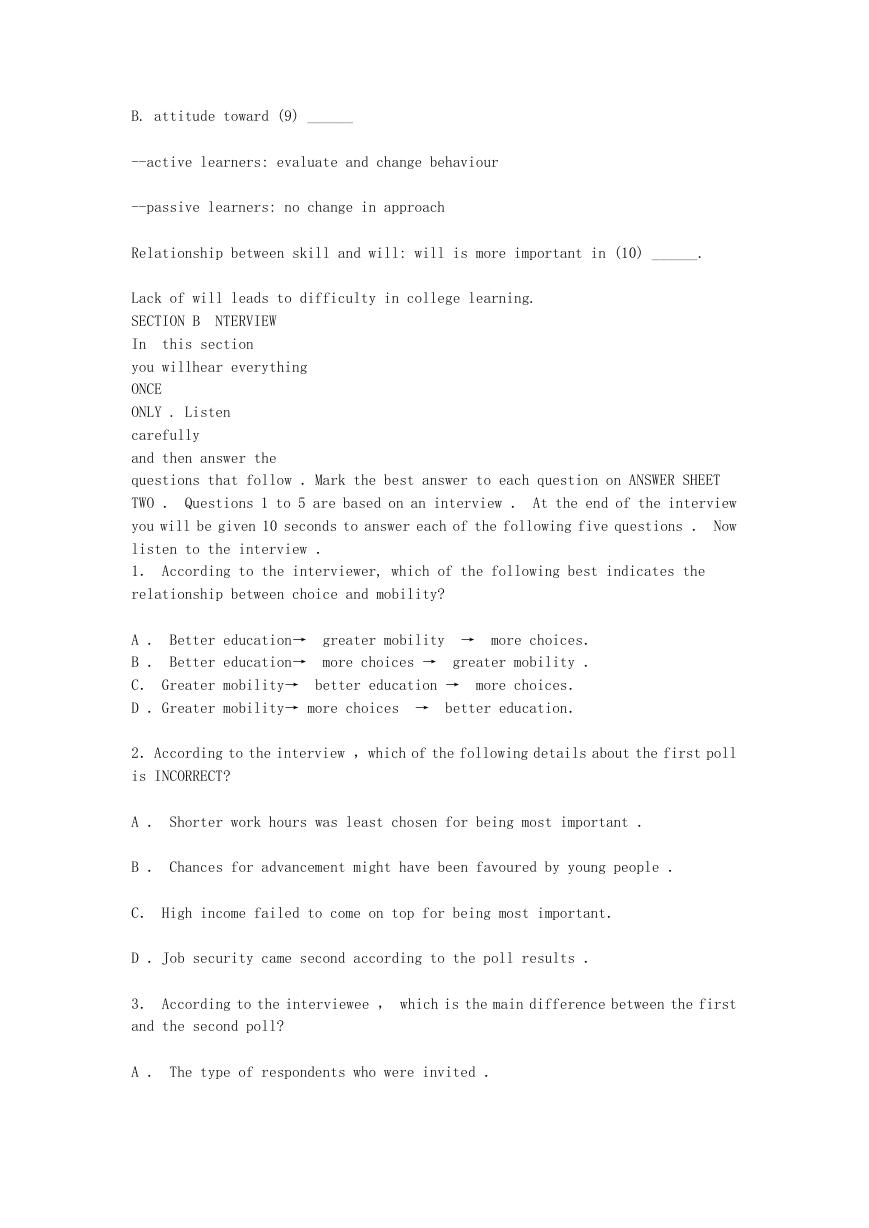
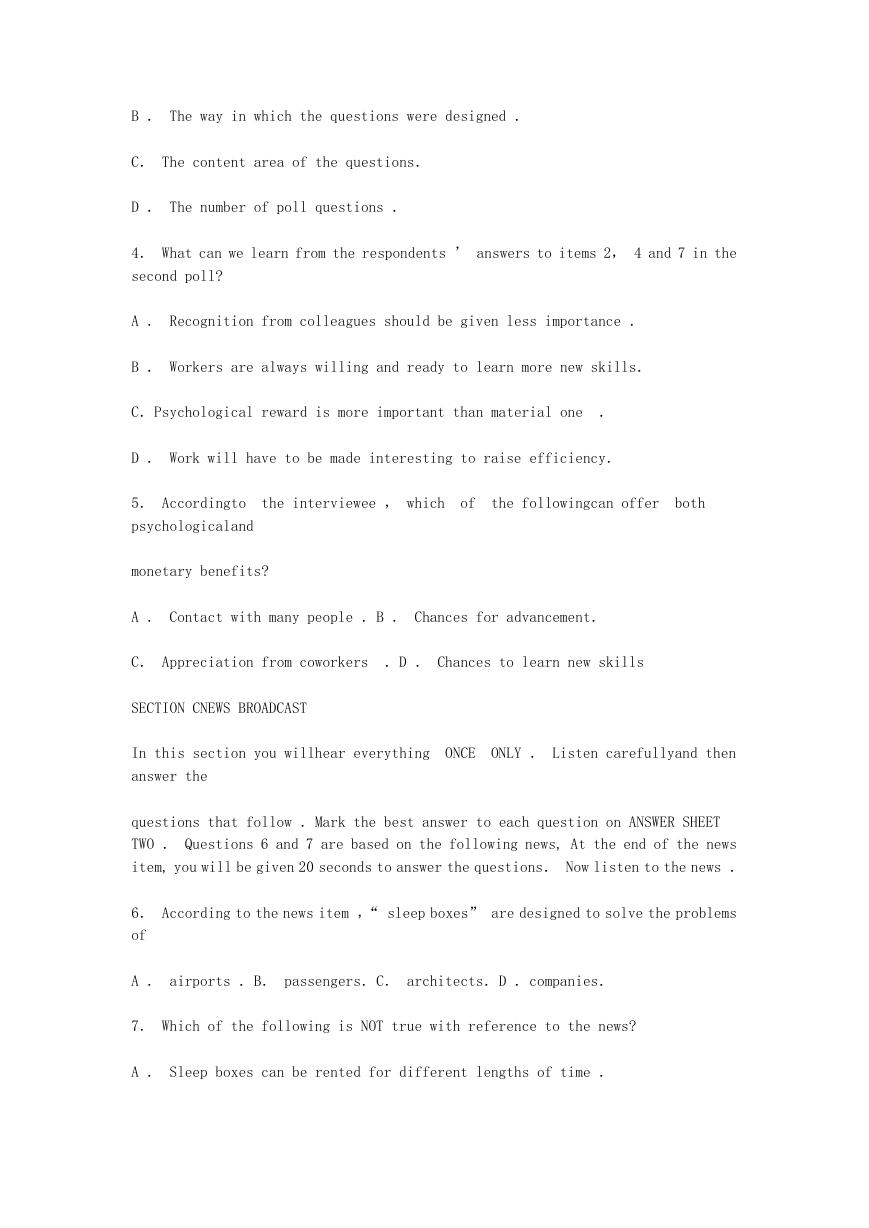
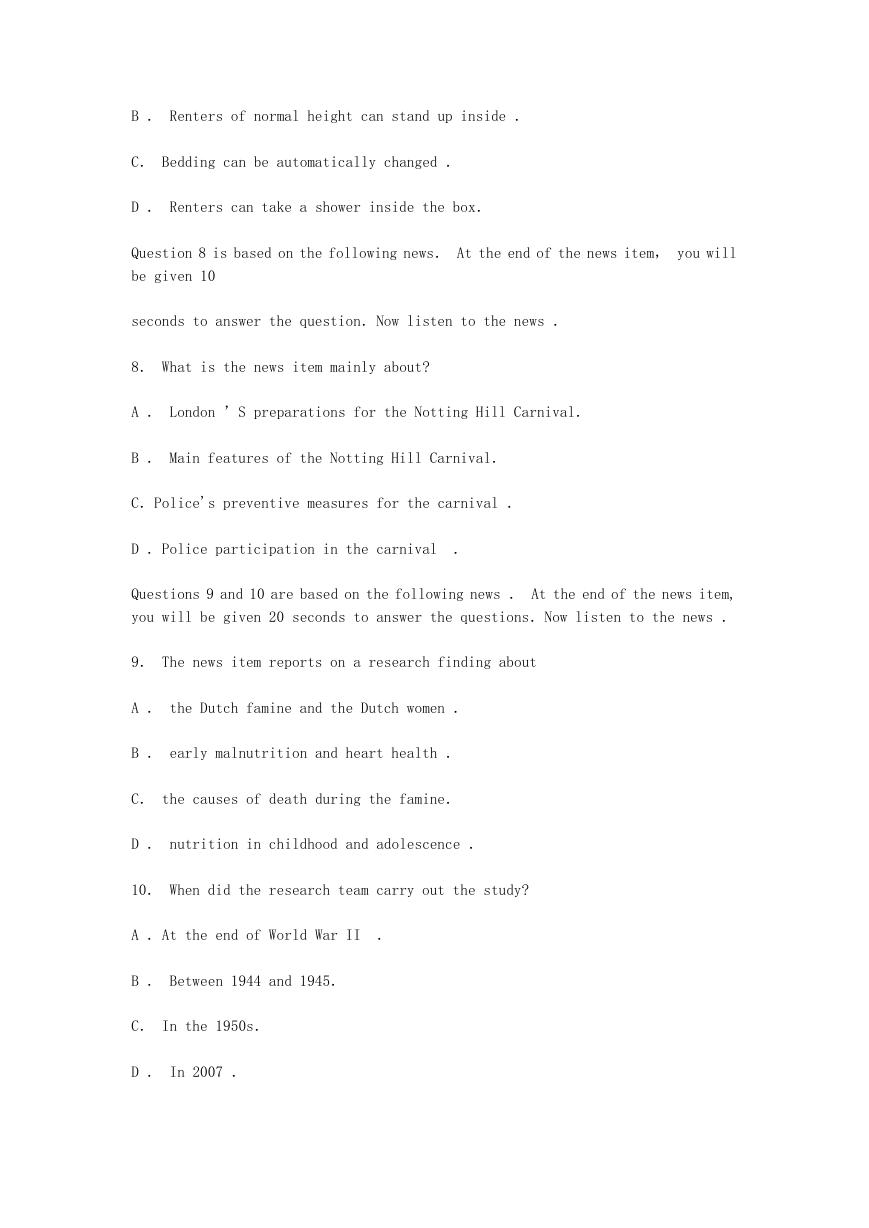
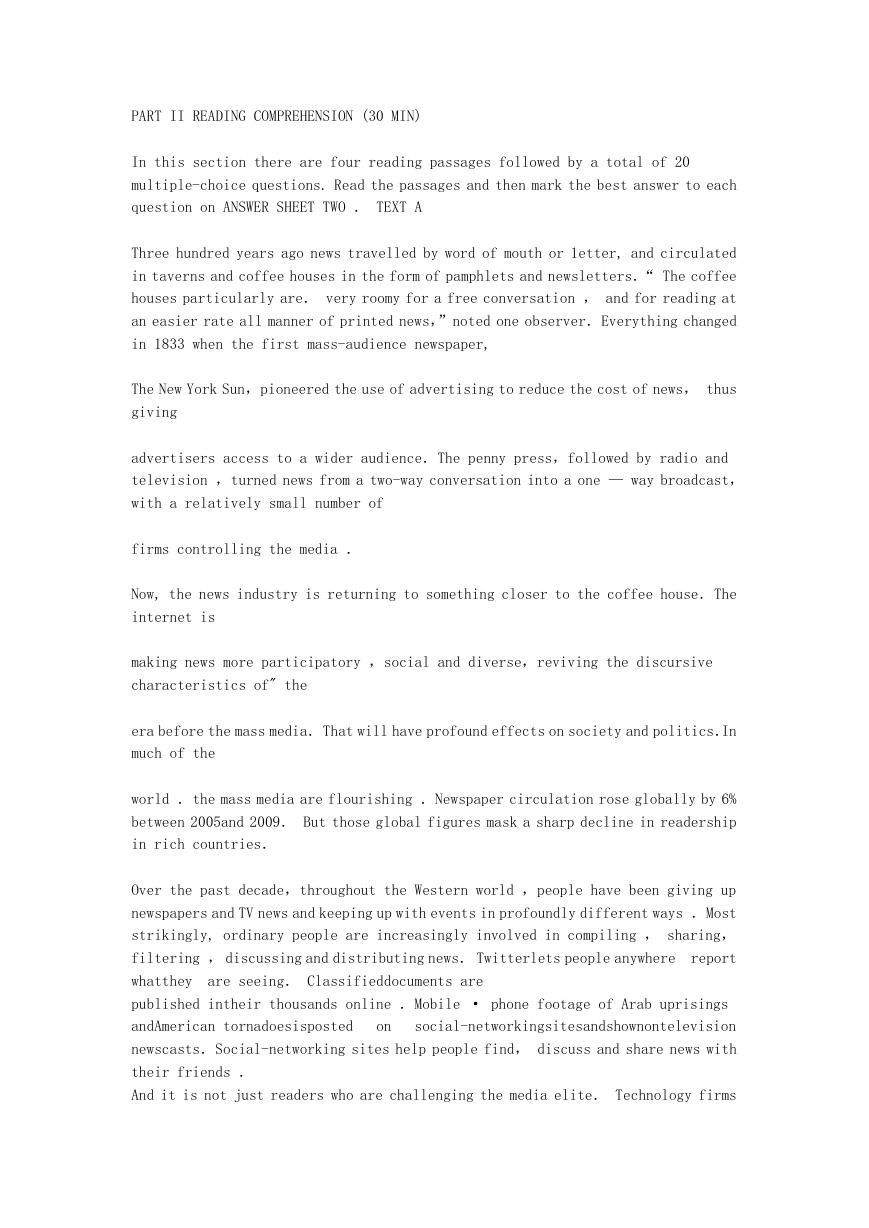
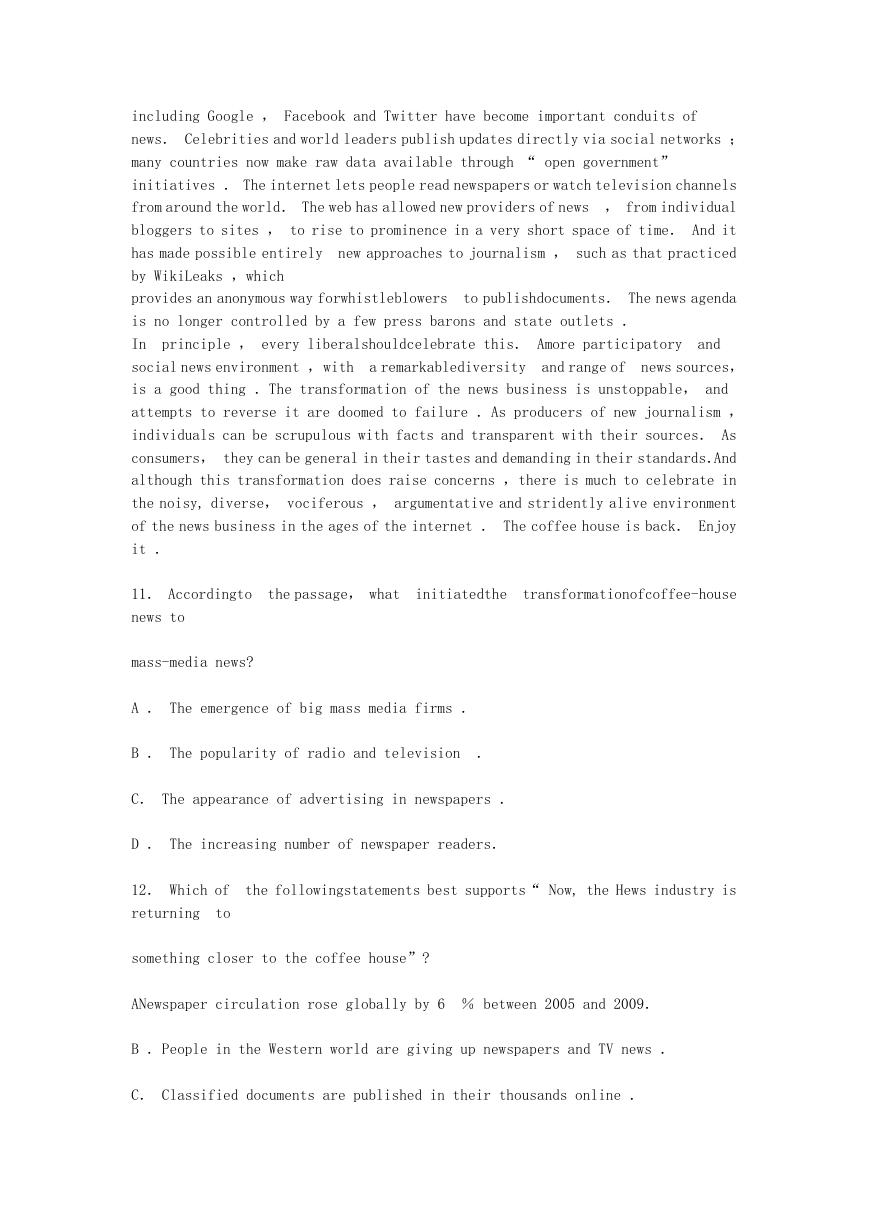
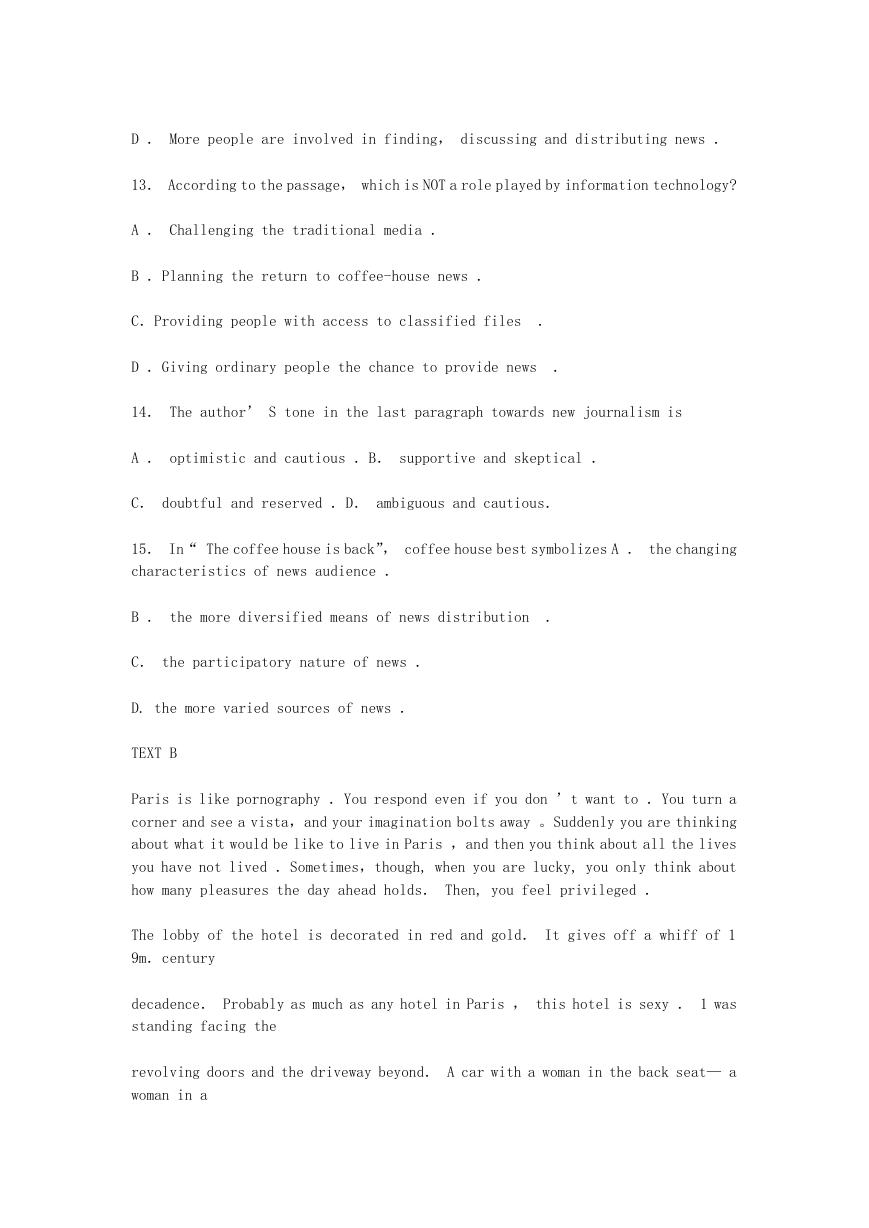
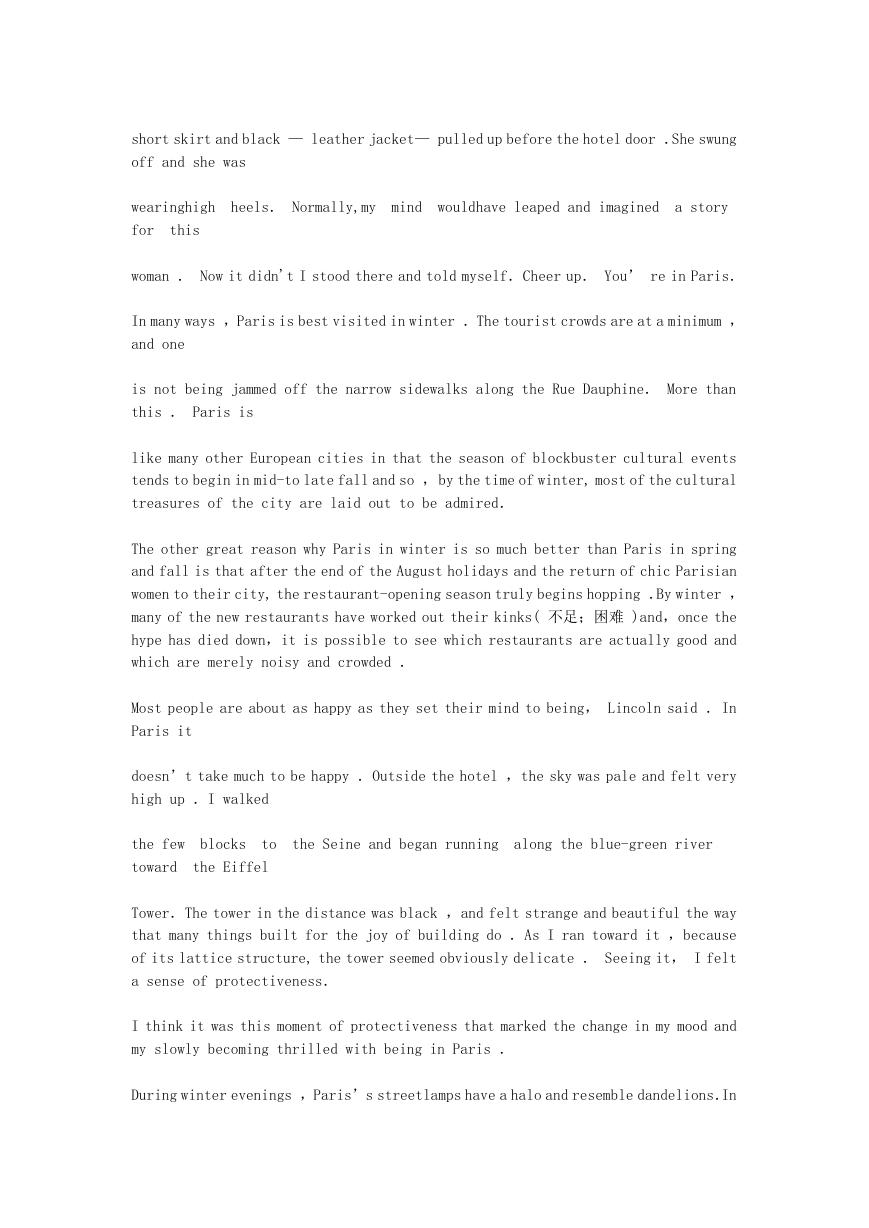








 2023年江西萍乡中考道德与法治真题及答案.doc
2023年江西萍乡中考道德与法治真题及答案.doc 2012年重庆南川中考生物真题及答案.doc
2012年重庆南川中考生物真题及答案.doc 2013年江西师范大学地理学综合及文艺理论基础考研真题.doc
2013年江西师范大学地理学综合及文艺理论基础考研真题.doc 2020年四川甘孜小升初语文真题及答案I卷.doc
2020年四川甘孜小升初语文真题及答案I卷.doc 2020年注册岩土工程师专业基础考试真题及答案.doc
2020年注册岩土工程师专业基础考试真题及答案.doc 2023-2024学年福建省厦门市九年级上学期数学月考试题及答案.doc
2023-2024学年福建省厦门市九年级上学期数学月考试题及答案.doc 2021-2022学年辽宁省沈阳市大东区九年级上学期语文期末试题及答案.doc
2021-2022学年辽宁省沈阳市大东区九年级上学期语文期末试题及答案.doc 2022-2023学年北京东城区初三第一学期物理期末试卷及答案.doc
2022-2023学年北京东城区初三第一学期物理期末试卷及答案.doc 2018上半年江西教师资格初中地理学科知识与教学能力真题及答案.doc
2018上半年江西教师资格初中地理学科知识与教学能力真题及答案.doc 2012年河北国家公务员申论考试真题及答案-省级.doc
2012年河北国家公务员申论考试真题及答案-省级.doc 2020-2021学年江苏省扬州市江都区邵樊片九年级上学期数学第一次质量检测试题及答案.doc
2020-2021学年江苏省扬州市江都区邵樊片九年级上学期数学第一次质量检测试题及答案.doc 2022下半年黑龙江教师资格证中学综合素质真题及答案.doc
2022下半年黑龙江教师资格证中学综合素质真题及答案.doc